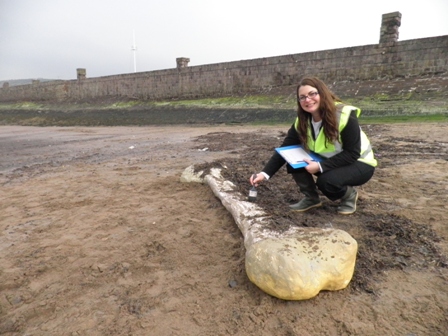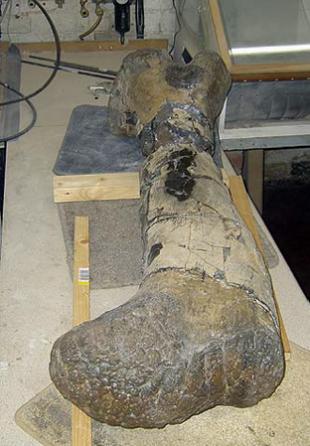[Recent Entries][Archive][Friends][User Info]
| Time | Text |
|---|---|
| 10:47 am [Link] |
Cetiosauriscus Cetiosauriscus (meaning "whale-lizard-like" i.e. "Cetiosaurus-like") is a genus of sauropod dinosaur. It was perhaps a diplodocid, a close relative of Diplodocus, and lived in the Callovian (Middle to Late Jurassic Period) of England (about 162 million years ago (mya). Cetiosauriscus was a quadrupedal, herbivorous, saurischian dinosaur. Cetiosauriscus was first named by German palaeontologist Friedrich von Huene, in 1927, as the generic name of the species Cetiosauriscus leedsi. In 1887 John Whittaker Hulke had named the species Ornithopsis leedsii, based on specimen BMNH R.1984-1988, a set of bones from the Leeds collection. After a suggestion by Harry Govier Seeley, in 1905 this species was renamed to Cetiosaurus leedsi by Arthur Smith Woodward who referred a second specimen from the same collection to the species: BMNH R.3078. Both specimina were assigned to Cetiosauriscus leedsi by von Huene. In 1929 he also renamed Cetiosaurus greppini, a species found in Switzerland, Cetiosauriscus greppini. In 1980 Alan Jack Charig concluded that BMNH R.3078 could not be referred to BMNH R.1984-1988, due to a lack of comparable bones, and created a new species for the former: Cetiosauriscus stewarti. The specific name honours Sir Ronald Stewart, the chairman of the London Brick Company which owned the clay pit the fossils had been found in. Furthermore he considered both C. leedsi and C. greppini nomina dubia. In 1990 John Stanton McIntosh renamed two more species of Cetiosaurus into Cetiosauriscus longus and Cetiosauriscus glymptonensis respectively. Both were again considered nomina dubia by Charig, who in 1993 petitioned the ICZN to make Cetiosauriscus stewarti the type species instead of the original Cetiosauriscus leedsi. This was done in 1995, making BMNH R.3078, already the holotype of the species C. stewarti, the genoholotype of the genus Cetiosauriscus. BMNH R.3078 was found at Peterborough, Cambridgeshire, in strata of the Upper Oxford Clay and consists of a series of vertebrae from the rear half of the skeleton. Other remains, including a front leg, have been referred to C. stewarti. It has been estimated that this creature stood six metres high and was fifteen metres in length, weighing about nine tonnes. It may have been preyed on by carnivores such as Megalosaurus and Eustreptospondylus. Von Huene originally classified Cetiosauriscus as a member of the Cardiodontinae within the Cetiosauridae. In 1978 McIntosh concluded it belonged tot the Diplodocidae because of double chevrons under its caudal vertebrae, the short front legs and a tabular bump on the lower end of its first metatarsal. This would make Cetiosauriscus the oldest known diplodocid. Other researchers have suggested it could have belonged to the Mamenchisauridae instead, which group also features double chevrons.
Размеры тела в сравнении с человеком:
|
| Reply: | |






